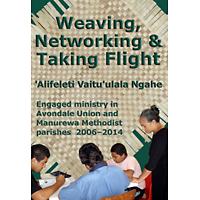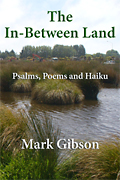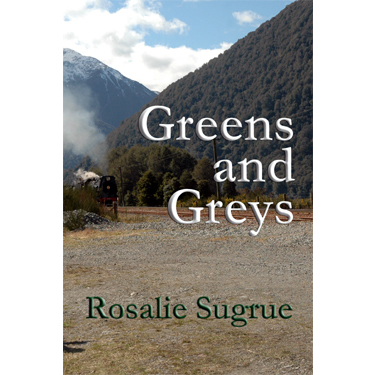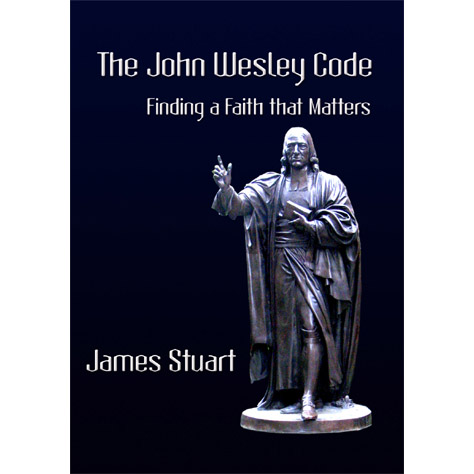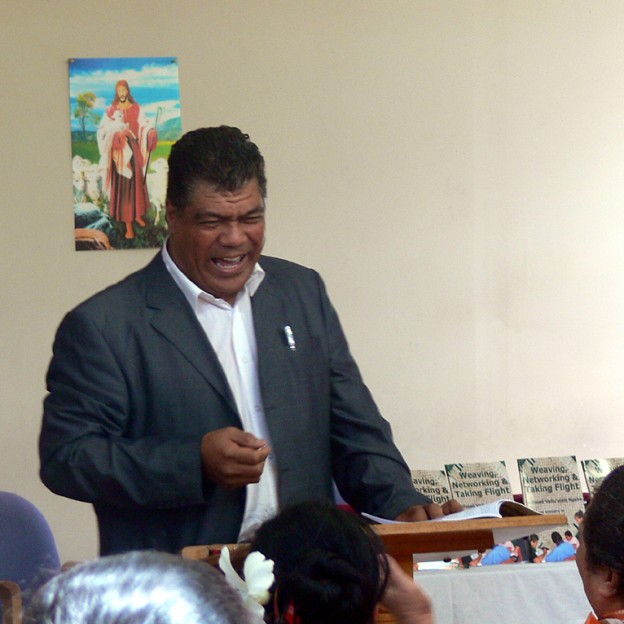6 — Ruth
Tuesday, 10 March
“Now it came to pass in the days when the judges ruled that there was a famine in the land … So begins of the Book of Ruth.”
Kat slides in beside Jen. “Got held up,” she mutters.
“In ancient Hebrew literature, ‘There was a famine in the land’ equates to our ‘Once upon a time’ — a phrase that indicates a story will follow. ‘There was a famine in the land’ was a way of moving a character from where they were to somewhere else, the humdrum of ordinary life being no basis for a good story. ‘There was a famine in the land’ catches attention. The situation requires resolution, and thus a plot is born.”
Jen wants to think on this but can’t because Kat is whispering again. “Excellent Parts has a prime seat today.”
Jen notes Darlene scribbling notes in the centre of the front row, and wonders if today’s blue t-shirt bears a logo. She also wonders just how excellent the girl’s parts are. It is so effortlessly easy for the young.
“This is a story of three strong women making decisions for themselves. Sixty-five percent of the Book of Ruth is dialogue. With speech being, as it is, in the present tense, the action is pulled into the now. This increases the liveliness of the characters. In a time when women who could not claim a father or husband disappeared, here is a remarkable story of strong women, decision makers, women taking charge of their own destiny. It is likely that this story was originally told to women by women. It is the one Bible book in Scripture that may have been developed by women.” Sarai moves to the whiteboard, marker poised. “What are the ways this story can be read?”
“A love story,” ventures Ms Serious.
“Why?” asks Sarai.
“Verses from Ruth are often read at weddings.” Philippa Tombs’ father is a member of the University Council. Philippa takes her studies seriously.
“As history,” volunteers the guy who isn’t Steve. “It is set in a defined time, when the Judges ruled the land.”
“Loyalty and generosity,” pipes up Darlene. “Ruth was loyal. Boaz was generous.”
Sarai’s direct gaze bores into the Maori student. “Miss Tainui?”
“Survival — marginalised women struggling against the odds.”
“Quite so. Any other suggestions?”
The class remains still. Sarai returns to the lectern.
“Ruth is an exceptional book in many ways and not least in that it is the only book in the Old Testament without a word of condemnation for anyone. Beginning with a famine the text moves from the barrenness of Moab, its barren land and its barren women, to the renewed fertility of Bethlehem, a good harvest, marriage, and the fertility of a son. The first intended audience would have been shocked to hear of a Hebrew couple moving from Bethlehem to Moab, and worse, allowing their sons to marry Moabite women. The tribe of Moab originated from incest.
“Naomi is widowed — and justly so, in the minds of the listeners. With few options, like the prodigal, she decides to return home. Her daughters-in-law start to go with her but she reminds them they have mothers of their own and the possibility of remarriage. The women weep, kiss and cling. Orpah obeys Naomi’s wish and returns to her mother’s house. Ruth utters a speech of undying loyalty, to which Naomi has no response.” Sarai considers the faces before her. “The text implies they walked on in silence. What possible reason could there be?”
The students lower their eyes, each hoping they will not be cornered. Unfazed, Sarai continues. “Chapter one ends with the tantalising words, they came to Bethlehem at the beginning of the barley harvest. Soon Ruth is gleaning in the fields behind the barley reapers. Naomi has directed Ruth to the field of a kinsman. The Hebrews considered all foreigners promiscuous but Moabites despicably so. Naomi does not warn Ruth about the local men. Does Naomi see molestation as a way of acquiring a husband? Was a Moabite daughter-in-law an embarrassment to an Israelite from a land-owning family? The traditional view is Naomi harboured the hope that Boaz himself would notice the good-looking young woman, as indeed he did. He even kept a paternal eye on the stranger, suggesting she stay near his female workers and drink from the well-water drawn by his men — an interesting reversal of the usual Biblical male-female meetings at wells. Name one?”
Jen forgets to avoid eye contact. Luckily Rebekah comes to mind. Kat supplies Rachel. It is her grandmother’s name and her story has stuck.
“Any others?”
“Zipporah, wife of Moses,” says Darlene.
The ‘excellent’ reply causes Darlene to hide her face in her hands.
“Boaz,” resumes Sarai, “invites the foreign woman to share his own bread and wine. This is tantamount to welcoming her into his family. Loyal Ruth keeps some of the food offered her to take home to Naomi. After the meal Boaz instructs his reapers to leave larger than usual gleanings. In chapter three Naomi masterminds a plan and Ruth appears to be a willing participant. At the end of the harvest party a merry Boaz lies down on the hay and Ruth curls up at his feet. Feet as used here is a biblical euphemism for genitalia. Boaz commends Ruth for not going after the younger men and spreads his cloak over her — more euphemistic symbolism.
“After the threshing-floor incident Ruth is no longer described as foreigner, servant or handmaiden. Boaz calls her a worthy woman. Naomi calls her daughter and the narrator calls her woman. A closer relative than Boaz is willing to honour the law regarding widows and buy the field owned by Naomi’s husband, until he finds it has a condition attached. A condition imposed by Boaz: with the land parcel comes the foreign woman. The kinsman has no wish to marry a Moabitess and forfeits his claim. Thus Boaz is able to legally acquire both the field and the woman.
“The matriarchs of the town are generous in their good wishes. Their blessings make references to Leah and Rachel. We know skulduggery was rife in that household. They also express the hope that Ruth will be as Tamar, presumably a fertility wish, as Tamar bore twins, the result of seduction and trickery. The text implies that Naomi’s friends know and approve of what has happened. The harvest-hints of fertility come to pass: Boaz and Ruth produce a child, whom the women call a child born to Naomi. How might Ruth feel about this? It is the women who name the baby: Obed, meaning sought-after. Baby Obed becomes the father of Jesse, who is the father of David. The child of a Moabite woman is destined to be the grandfather of King David. The greatest of Israel’s kings was not of pure blood! Set against the barley harvest, the Book of Ruth carries a premonition of David’s reign being blessed with fertility and plenitude.”
Sarai returns to the whiteboard. “Ruth may be a testament to loyalty and generosity, but also to … ” she writes compromise. “The story is not a simple tale set in the time of the Judges.” Non– is added to historical. “Its content is political and devised at a later time, possibly during King Solomon’s reign. Placed here it explains the importance of the genealogy connection to King David, as it could support the international marriages of his insatiable son, Solomon. If written, as is considered more likely, during the time of Ezra and Nehemiah this story is protest literature. Post-exilic laws enforced the divorce of all foreign women. Imagine that!” Sarai’s arms spread with visualised horror. “Families torn apart, women and children driven out with no one to provide for them.” Her expression is so dramatic a collective shudder ripples through the room.
“Are there other ways of reading this story?” asks the rhetorician, and answers, “Of course there are. Ruth speaks the language of Covenant Israel. She denies her own culture. The subscript could be an underlying goal of turning Moab into Israel.” Sarai adds assimilation then propaganda to the list. “But perhaps it is also a personal story.” Love story is underlined. “Not a story of personal fulfilment, but rather the story of a young woman prepared to do anything for the one she loves.” Sarai twirls back to the board, writes, then exits the room. Her final red-lettered words are unrequited love.
As they file out Darlene stops in the lobby, apparently lost in thought. Percussionists usually do it standing announces her shirt. “Hullo, Darlene,” says Jen, deliberately disturbing her reverie, “are you a percussionist?”
“No,” Darlene looks blank. She gives herself a slight shake and follows Jen’s eyes to the logo. She smiles. “I’m a cellist. The youth orchestra is fundraising with these t-shirts. I’m majoring in music. This is an interest class for me and I’m really enjoying it.”
“Me too,” says Jen.
~ ~ ~ | ~ ~ ~
Kat arrives at the motel early. She doesn’t usually work Tuesday afternoons but has a new client to fit in. She decides to take the opportunity to check out the Ruth story. Is it a love story between an older man and a young woman, or is Ruth a lesbian? Kat has no leanings toward lesbianism. Such words were not spoken in her grandmother’s house, but it was known around school that such a person was running a business in Hokitika. The kids weren’t too sure of the facts and there was confusion between lesbian and transgendered.
City life had broadened her education considerably. A friend in the sex business had suggested she have a go at tipping the velvet but it hadn’t turned her on. Didn’t take long to discover Christchurch has lots of queers. Kat quickly concluded that, like in all minority groups, some individuals are nice and some aren’t. As she said to Jen, Darlene seems a Decent Sort of Dyke. Both had grinned at the alliteration, and since then refer to her as Triple D, though agreed it doesn’t describe her bra size.
Kat had thought homosexuality a modern thing but Jen maintained the ancient Greeks wrote plays about it, so presumably all the ancients were into it. Jen had related that back in her Bible Class days the kids used to snigger about King David being bisexual, he was a great one with the ladies but the love he had for King Saul’s son Jonathan was described in the Bible as ‘passing the love of women’ — what else could it mean?
After rereading the four-page Book of Ruth, Kat feels the ‘noble-older-man-meets-pretty-but-poor-young-woman’ story is the romantic tale she prefers. But Ruth is unnaturally keen to do all she can for her mother-in-law, to the point of not being her own person. If Kat had a child she wouldn’t let any mother-in-law claim it and name it. Any child Kat gave birth to would be hers to the full.
A knock causes her to shove the Bible back in its drawer. Why do they come early? She admits the new client and is charmed by his easy casual manner. He gives his name as Fish and looks at her with warm appraisal. “You’re a good-looking chick, Amber. Delighted to meet you,” he extends a hand and gives hers a no-nonsense squeeze.
Amber places his age at around 50, dark red hair, no sign of receding. Untamed beard, bright eyes, and lean figure. Clothes ‘flamboyant casual’, she decides. “Like the hat,” she comments.
Fish is in no hurry. “Good little pad you have here, discreet back street but not far from the city centre.” He sinks into an armchair, extends his long legs and gazes around. “Paintings, not prints, I like that. A view of the Waimak I would guess, not brilliant, but definitely original, probably done by an art student.” He stands. “See here, paint applied with a pallet knife, technique not perfect but good general effect.” He roams the room. “Homely ambience, that’s the thing about these older motels, lounge separate from the bedrooms, built for people not for profit.” He continues his tour. “A full kitchen and well stocked.” He looks at his watch. “Almost three, smoko time. Do you fancy a cup of tea or coffee? I’m sure you deserve a break.” His eyes flick from her cream carnation hair-slide to her cream high-heels, and he flashes a smile. Amber feels warmed. Perhaps I’m one of those women who is drawn to older men, she wonders.
“I sure could do with a cuppa,” says Fish. He glances at her with eyebrows raised. “No worries, matey, I’m in a quick-bonk mood. I’ll be gone by three-thirty.”
“Well, OK then,” says Amber. “I could go a coffee.”
She stands to get the jug but Fish is already filling it. “I did a stint as a motel cleaner once. A good bit of elbow grease has gone into this jug, I can tell you, and those copper-bottom pots. Look at them, beautiful! I can’t stand those crappy plastic jugs.”
Sometimes clients stall because they’re nervous, but Fish doesn’t fit that category — too relaxed. She wonders if he has some kinky fetish that he wants to discuss, but dismisses the idea — too open and friendly. Perhaps he genuinely likes a three o’clock cuppa.
“I haven’t been in Christchurch for a while,” he says. “Been down South Canty for a couple of years. I like to go bush every now and then, but you can have too much of good thing, I say. I like to maintain balance between the heartland and the hub.”
“What do you do?”
“A bit of this and a bit of that, I don’t believe in getting stuck in a rut. Hunting, trapping, shearing, painting, shop work, liquor barns … townie jobs are my form of retail therapy.” He grins.
“So Canterbury is your home?”
“I like Canty but no, I’m not fenced in by boundaries, my home is anywhere in the South Island. You wouldn’t catch me in that rat race up north. Hell no!” He pauses as though letting the horror of the thought digest. “Let the Wellington weirdoes and the Jaffas have it,” I say.
“I gather you don’t have a partner.”
“I’ve had many, my dear, but not for long. Women have this urge to claim a man. When I see the apron-strings looping my way, it’s time to sever the ties. I had seven kids last time I counted, could be more, keeping track is not my thing. I’m a free spirit and I like a good bonk. Let’s get on with it.”
He sweeps up her empty cup from the floor, dumps the two cups in the kitchen sink, swings back to the lounge, and drops his trousers. The pro hasn’t moved.
“Ah, you like a guy to shower. OK. I’m fast. I’m used to improvised water supplies. Be with you in a couple of secs.”
The pro appears frozen. Fish steps out of his trousers, takes two steps toward the shower and stops. “Hey, what’s up, kiddo? You’re not going frigid on me are you?”
Kat can feel her innards churning. The words don’t want to come. With effort she forms the sentence. “Were you at Ross in 1987?”
“Yeah, could have been around then, spent a couple of years in those parts. Oh God!” He cuts off and stares. “How old are you?”
Kat is on her feet, hands clenched to knuckle-white. “You don’t care about your kids. You don’t care about your women.” Her voices rises to a scream. “Get out!”
“Hey, hey, baby, baby, hush.” Fish hauls up his jeans with the speed of a shotgun order.
“Don’t touch me,” she fights off his attempted hug. “I’m not your baby. You never treated me as your baby when you should have.”
Fish steps back and holds up both hands in surrender. “It’s not like that. I do care. I’m just not fitted to domestic life. I’ve got these gypsy genes. I loved your mother, I really did, but I wasn’t ready to be a father. I told her but I couldn’t get her to believe me.”
“Children need fathers.”
“Yeah, yeah, but you had one, your mother took up with someone mighty quick, so I heard. I even came back to check. You were a cute toddler. She had a man, I wasn’t needed.”
“You didn’t pay any child support.”
“Well, my lifestyle wasn’t conducive to regular income and payouts. Keeping records isn’t easy with odd-jobbing, money under the counter, you know how it is. Bet you don’t declare all your earnings. Paintings often sell for cash. I’m not one for permanent addresses and keeping accounts.”
“Your slippery book-keeping kept my mother tied to man she didn’t love. And he hated me. George was a monster but at least he supported his own kids. You say I’m not the only one. I’ve a horde of half-siblings out there? You’re worse than George. You can bugger off, right now. Go!”
“Hey, hey, Amber … it’s not Amber is it … it’s … Katrina? You were my first baby girl. I’m sorry kid. I like you. I’d like to get to know you as a person. If you feel I’ve let you down I could try and make it up. If you ever want me, here’s my card.” He leaves a business card and a heap of $20 notes on the table.
Kat slams the door after him and locks it, sees the items on the table and dissolves into tears. After filling several tissues she dries her eyes and picks up the card. Kevin (Fish) Salmon, she reads, Artist. Bullshit artist!
Wednesday, 11 March
Kat spends most of the next day in bed. Yesterday’s meeting with her birth-father has left her drained. Part of her wants to process the reality of the encounter, but only a tiny part. Her dominant head-in-the-sand philosophy smothers what she doesn’t want to explore — keep your mind off difficulties, no point getting in a stew over something you can do nothing about. Gran’s homespun philosophy serves her well. Roll with the punches. Life’s what you make it. There is nothing a good sleep can’t improve.
Sleep is attractive, no clients to bother about today and there is the restaurant tonight. Waitressing has its pluses. She could manage financially without it but it is legit, a job she can name without explanation, a job that provides a measure of collegiality. Her self-employment is solo by choice. She has no intention of sharing her earnings with brothel or pimp. Waitressing is hard on the feet, the pay abysmal, but you know where you are and what to expect. Tuesday is the lightest of her three consecutive nights. Wednesday is unpredictable but she and Alison can handle it. Three table staff are required for the rest of the week.
Only four tables are occupied as her shift begins. Returning from the kitchen with a jug of iced water Kat is startled to see Sarai and another woman being ushered to a table by the maître d’. Well, I’ll be darned. Sarai here! And she’s got a girlfriend with her. Kat’s curiosity is aroused. She’s heard the rumours. How friendly are these two women? Could they be celebrating something special, or are they merely eating out? Kat skips explaining the menu to her couple and shortcuts to the blackboard specials.
“We’re celebrating 44 years of marriage,” the man beams.
Kat offers her congratulations and says she will fetch the wine waiter. Forty-four years, double my lifetime! Are they really as happy as they look? With the wine-waiter summoned Kat moves smartly to Sarai’s table and gives the formal welcome. “Good evening, I am Katrina your waitress for the evening.” Her smile has more twinkle than management requires.
“How lovely!” exclaims Sarai. “Pauline, this is one of my students.”
The other woman is younger than Sarai, Kat notices, but still old. Pauline easily meets her gaze and expresses pleasure. Kat is not surprised that they both order the vegetarian special. The friend, Pauline, has her back to the kitchen and is unaware of Kat approaching with the water jug. “Just like old times …” Kat hears her say. Sarai is smiling but Kat observes it as an indulgent smile. Sarai is sitting well back in her chair, whereas Pauline is leaning forward. Kat puts the jug down and sees Pauline’s wistful expression slide to mouth a perfunctory thanks. Mmm, thinks Kat, have I interrupted something?
However, when she returns with the mains both women are happily chatting over chardonnay. She keeps a wandering eye on them as she serves her other tables but detects not a hint of physical intimacy.
The anniversary couple are kneeing each other under the table. They are mildly tipsy by the time they decide to ‘go the full hog’, as the man puts it, and have the death-by-chocolate. “We didn’t have a fruit cake for our wedding,” confides his wife. “We both hate dried fruit. Under the posh icing was chocolate cake.” The memory sets her to a peal of giggles. Kat gives a polite smile, turns to do their bidding, and freezes. Standing by the maître d’ is … it can’t be … it totally can’t be … but it is … with a leggy young woman. Kat flees to the kitchen. This is something she cannot face. She gives the death-by-chocolate order and hangs around the kitchen, desperately hoping that Alison will arrive and she can ask her to serve that table. Alison doesn’t appear but the maître d’ does. “What are you doing? There are customers out there, move it.” Miss Hicks, as she demands the table staff call her, is not open to favours.
Kat edges through the swinging doors with her heart in her mouth. She sees Sarai look in her direction and heads for her table.
“Is something wrong, Kat?”
“Yes, actually there is.” How does she know? The rest comes in a rush. “I know you don’t want a dessert but please, Sarai, would you order something, anything. If I’m not serving you I’ll have to serve that table over there, and I … can’t face that man. I’ll pay for whatever you order.” The women look from Kat, to Fish, to each other.
“I could make room for an Irish coffee,” says Pauline.
“Why not,” agrees Sarai. “Two Irish coffees, and take your time, we’re not in a hurry. And Kat, we don’t need your money.”
~ ~ ~ | ~ ~ ~



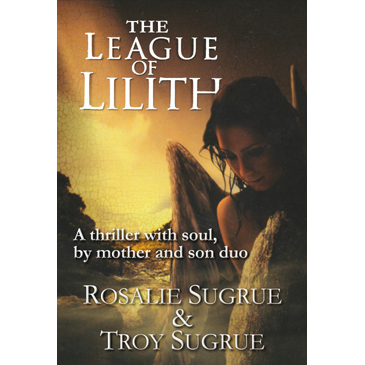
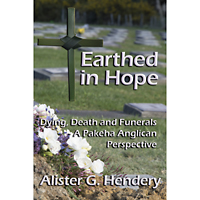
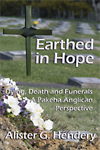 Review by Anne Priestley, published in
Review by Anne Priestley, published in